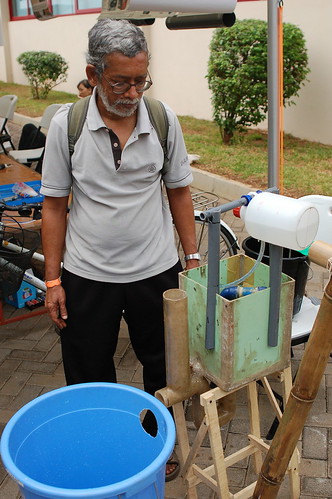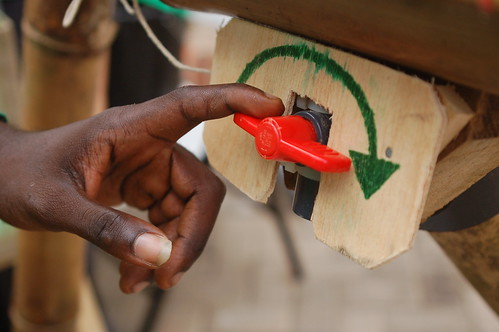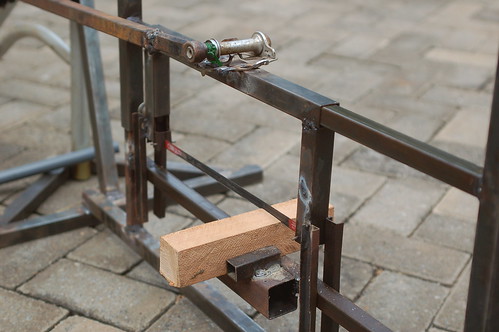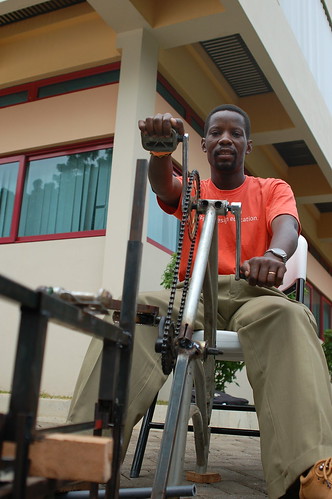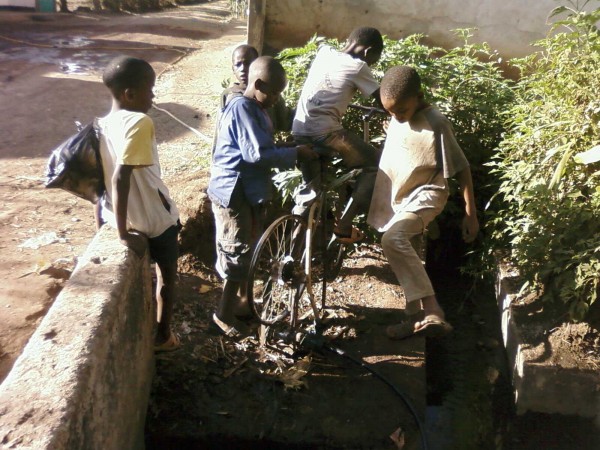Amy Smith (of MIT’s IDDS) somehow got a hold of a mic and madhouse has now ensued! Everyone has been split up by their birth month into groups. They are given 5 water bags (sachets) and told to solve the world’s greatest problems. 30 minutes later we get…
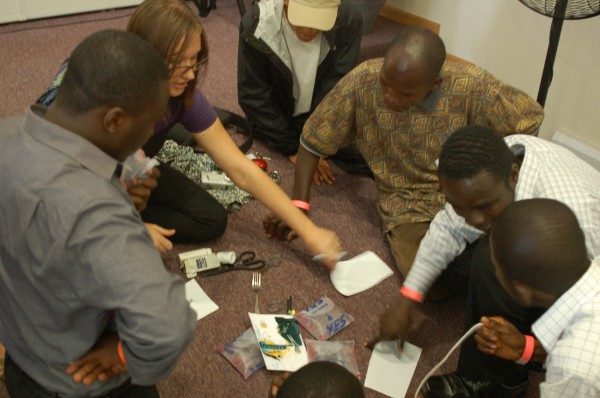
January: The Sachet Kebab
Decreasing litter and polution. People can collect water sachets off the ground easily with a pole and spiked end. It can be placed along the roads, and a lot of trash can just be spiked on the tip of it.
February: Hydro Electric
Generate electricity by using the bags to create small turbines.
March: Light absorbent and heat absorbent bags
They also had a crazy idea of drinking the water, peeing in the bag and selling that to farmers for fertilizer… to much laughter…
April: Potting and a Wallet
Drink the water and make it empty. Cut the top off and put in soil and grow small plants. Take another bag and put a small hole in it for drip irrigation. Second idea: use the bag to put your money in for when it rains.
May: The individual water-shower packet and a purse
Hang the water and put a small hole in it. Create a purse out of it to hold a camera or mobile phone.
June: Waterbelt, glasses strings
They’ve created some really interesting spectacle (glasses) holder. Also, a waterbelt to hold the water as you’re moving around.
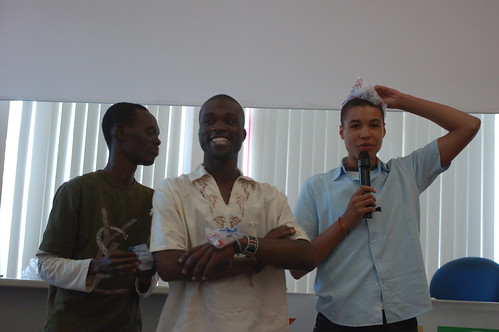
July: Water purifier
Uses the light from the sun to help purify the water. It takes a bottle top cut off and used as a funnel as well. It’s shaped like a train, for marketing reasons.
August: Kids toys
Make small airplanes and hats for children and an hourglass made from 2 water bags.
September: Drip irrigation and a pillow
Puncture a bottle or a bag on top to collect water, then use for drip irrigation. Also fill multiple old empty bags with air and put them inside a pillow case to create a pillow.
October: Drip irrigation
Starts with a bag, then a tube made of old empty bags that can direct the water further and over more areas.
November: Water resistant mobile phone case
“Your phone case is not water resistant, ours is. Clap for us.”
“We have created a water wallet, not just a plastic money carrier.”
December: Water sachet lighting system and a sachet wrist watch band
Put full bags on your roof that diffuses the light and warms the water.
